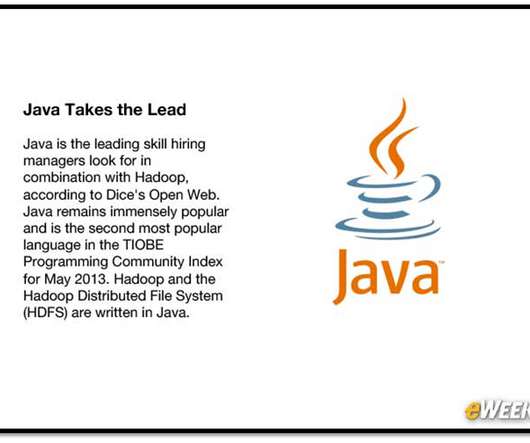5 Reasons why Java professionals should learn Hadoop
ProjectPro
OCTOBER 7, 2014
Traditionally relational databases have proved ineffective in handling and processing the large and complex data generated by organizations across the globe. Setting up a cluster, importing data from relational database using Sqoop, ETL/data cleaning using Hive, and run SQL queries on the data.












Let's personalize your content